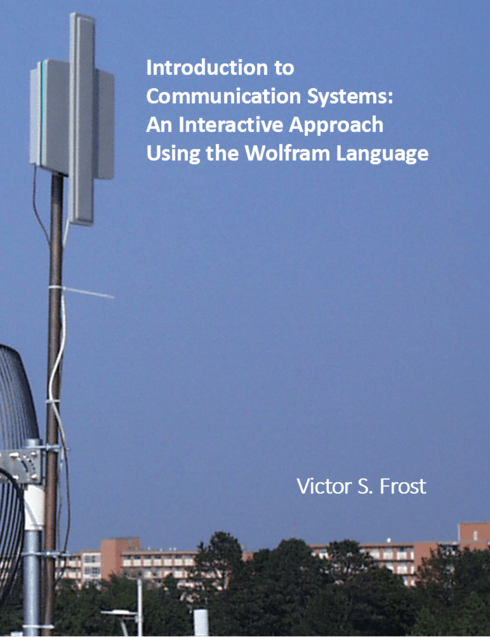










This book has most of the expected content for a first undergraduate course on analog and digital communication systems. It would be nice if there was a short introduction to spread spectrum modulation techniques (frequency hopping and. read more





Reviewed by Hoffbeck Joseph, Professor, University of Portland on 8/8/22
Comprehensiveness rating: 4 see less
This book has most of the expected content for a first undergraduate course on analog and digital communication systems. It would be nice if there was a short introduction to spread spectrum modulation techniques (frequency hopping and direct-sequence spread spectrum). There is no index or glossary, although you can search for keywords. The Signals & Systems Review chapter lists several important equations and definitions, such as Fourier Series, Fourier Transform, convolution, etc., but doesn’t really discuss what they mean or how the equations are used.
Content Accuracy rating: 3
Most of the content is accurate, but there are errors in some of the equations and graphs that may make it difficult for the students to understand certain parts of the material (at least in the version of the textbook that I reviewed). For example, in Section 2.4 there is a typo in the formula for cn. There is a typo in the Example after Figure 2.21. There are typos in the table with headers Filter Type and H(f). In Figure 2.44 (and the other DFT plots), the DFT plot is not scaled consistently with the DFT definition. There is a typo in Section 10.1 in the definition of instantaneous frequency.
Relevance/Longevity rating: 5
The content seems up-to-date and includes some discussion of recently deployed cellular and WiFi standards.
Clarity rating: 4
The writing is clear in most places. There are a couple of places where the author uses terms that are not defined, such as in Section 1.1 where dBm is not defined and Chapter 12 where link budget is not defined. Some sections (for example Sect 1.1 and Chapter 6) could be improved by adding an introduction that explains what material in contained in that section, why it is important, and/or how it relates to the rest of the material. The examples are live Mathematica simulations that allow the student to set different parameters values and immediately see the resulting graph, which is helpful. Some of the graphs in the examples don’t use enough points to make smooth lines, which makes it difficult to see what is going on.
Consistency rating: 5
The presentation is consistent.
Modularity rating: 5
The material is broken into sub-sections. Some of the sub-sections are long.
Organization/Structure/Flow rating: 5
The material is presented in a logical order.
Interface rating: 3
The book is viewed using the Wolfram Player. It is a bit difficult to jump around in the text. To close a section, you must scroll up to the top of the section and click a button. The Sections and Figures are numbered, but the examples, equations, and pages are not numbered, which makes it difficult to refer to a specific example, equation, or part of the text. On my system, many of the interactive figures didn’t work; they were blank and gave an error message when you hover the mouse over the figure.
Grammatical Errors rating: 5
The text is well-written.
Cultural Relevance rating: 5
The text does not appear to contain culturally insensitive or offensive material.
This ebook provides a unique pedagogical approach to teaching the fundamentals of communication systems using interactive graphics and in-line questions. The material opens with describing the transformation of bits into digital baseband waveforms. Double-sideband suppressed carrier modulation and quadrature modulation then provide the foundation for the discussions of Binary Phase Shift Keying (BPSK), Quadrature Phase Shift Keying (QPSK), M-ary Quadrature Amplitude Modulation (M-QAM), M-ary Phase Shift Keying (MPSK), and the basic theory of Orthogonal Frequency Division Multiplexing (OFDM). Traditional analog modulation systems are also described. Systems trade-offs, including link budgets, are emphasized. Interactive graphics allow the students to engage with and visualize communication systems concepts. Interactivity and in-line review questions enables students to rapidly examine system tradeoffs and design alternatives. The topics covered build upon each other culminating with an introduction to the implementation of OFDM transmitters and receivers, the ubiquitous technology used in WiFi, 4G and 5G communication systems.
Dr. Victor S. Frost is currently the Dan F. Servey Distinguished Professor at University of Kansas. He has been on the KU faculty since 1982 and was chair of the KU EECS department 2014-2019 and Director of the KU Telecommunications and Information Technology Center from 1997-2007. From Feb. 2009 to Feb. 2011 he was a Program Director at the NSF in Directorate for Computer and Information Science and Engineering - Computer Network Systems Division. He was elected to the IEEE Communications Society Board of Governors from 2008-2011. He received the KU Louise E. Byrd Graduate Educator Award in 2014. He received a Presidential Young Investigator Award from the NSF in 1984. He is a Fellow of the IEEE.